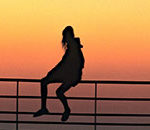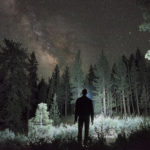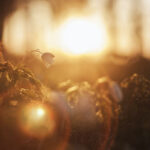Dust accumulating on helicopter blades doesn’t often yield any interesting imagery, but in certain situations the tiny particles atop helicopters in the desert light up. It’s an interesting effect, the exact cause of which has been debated:
One former Green Beret argues it’s called the Kopp-Etchells effect, and was named that in memory of two fallen American soldiers. From the article:
“Basically it is a result of static electricity created by friction as materials of dissimilar material strike against each other. In this case titanium/nickel blades moving through the air and dust. It occurs on the ground as well, but you don’t usually see it as much unless the aircraft is landing or taking off. The most common time is when fuel is being pumped. When large tankers are being fueled they must be grounded to prevent static electricity from discharging and creating explosions.”
A scientist argues in this article that the effect is most likely due to another phenomenon:
“The pyrophoricity of the metals involved is a well-established phenomenon, and is in my estimation a better explanation, given that both researchers and military officials are unsure of the cause. In fact, looking at the photographs, the “sparks” created are inconsistent with a massive, simultaneous, static discharge.”
Like This Article?
Don't Miss The Next One!
Join over 100,000 photographers of all experience levels who receive our free photography tips and articles to stay current:







Just a slight correction. While the Kopp-Etchells Effect is named after two fallen soldiers, only one was American. That would be Corporal Benjamin Kopp, U.S. 3rd Battalion, 75th Ranger Regiment. Joseph Etchells was the Section Commander for the British 3 Platoon, 2 Battalion Royal Regiment of Fusiliers, attated to 1 Plt, 2 Rifles. By reading Michael Yon’s story of the Kopp-Etchells Effect you will get a much greater realization of how these men served and how the effect is an honor for their memory.